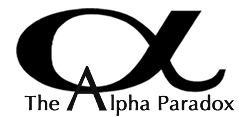Newsletter March 2016
March 4, 2016
Fighting fire with fire
The month of January was one of the worst months for trading since 2008, and February offered some modest reprieve, although after shocks continued to shake market confidence. In China, markets took a pause at the beginning of the month to welcome the year of the Red Fire Money, and the absence of panic selling triggers emanating from that region seemed to calm global markets somewhat. This more optimistic note was also driven by some stabilization in commodity prices. Although oil prices continued to experience meaningful volatility the commodity finished the month between $30 and $35 per barrel, which was far from the $25 per barrel that was flirted with mid month). News in mid month of the Saudi-Russian output deal has led to broader price stabilization, and while that may end the consumer’s “free lunch” of cheap fuel, a more stable oil price is critical to assuaging fears of deflation as well as further woes among energy producers. It is also likely to place a lid on further dollar strength.
Markets take a breather
US markets finished the month slightly negatively (the S&P 500 fell by 1%) while European markets were somewhat weaker, losing 2% (DJ Stoxx 600) and 3% (DAX), and the FTSE 100 (+1%) was remarkably resilient in light of the announcement of date of the BREXIT referendum for late June. While this caused Sterling to fall to 7 year lows against the dollar, the boost that a weaker currency will provide to the earnings of exporters together with an improvement in energy and resource stocks probably muddied the equity picture. Elsewhere, Emerging Markets such as Brazil and Russia rallied modestly, while Shanghai experienced a late month rally to end the month down only 1.8%, following a near 23% fall in January.
Financial and Asset Management Woes
Financial stocks were among the worst performers globally in January, and this sector continued to see turmoil in February. The DJ Stoxx 600 Banks fell another 5% after a disastrous January return of -14.5%, while in the US the S&P 500 financials fell by a further 3% after January’s loss of close to 9%. Poor sentiment was driven by the continuing low interest rate environment, which is moving close to one of negative rates, following the lead from Japan and certain European countries, as well as genuine structural concerns relating to possible defaults of funds (c.f. Third Avenue high yield fund that collapsed in December) as well as counterparty risk as risk assets and commodities crumbled. Although we often hear about the more robust footing that financial institutions are on today v. prior to the global financial crisis, there is also a creeping rise in leverage at mid sized US companies. When this is combined with a weaker earnings climate, the ingredients for a rise in corporate defaults starts to come into place. While this has been a concern for energy and resource stocks for some time and the number of actual incidents has been low, maybe the decline in financials is a harbinger of sorts that markets fear more structural weakness?
Asset management companies suffered their own kind of woes as large consolidated firms reported outflows from their active strategies and hedge fund of fund firms either continued their consolidation march (Northern Trust’s 50 South alternatives boutique agreed in early March to buy the larger Aurora Asset Management, which had seen its assets halved in recent years to $5 bn), while Carlyle announced the closure of its fund of hedge fund arm, DGAM, purchased only two year’s previously. Surely these types of transactions are evidence of another nail in the coffin of the fund of hedge fund industry. Clearly, those that do not adapt will no longer survive, but what is also sobering is the short time that such organizations have to devise a strategy. If earnings can collapse (by 70% in the case of DGAM) in one year and with no “forced buyer” among allocators, such firms must scramble to remain relevant. It seems that the drive towards customized accounts and other partnership solutions is inevitable.
Safe havens shift – but still beckon
High quality government bonds saw gains globally in February, and even EM bonds saw some interest, as the risk appetite picked up. Gold was up 11% in the month, reflecting a return to favour of this traditional hedge, which is now up close to 17% for the year. While during the month of January many market commentators called into question the US Fed rate trajectory in light of the exceptional global turmoil, a steady drumbeat of positive data (US payrolls in early March beat expectations although wages fell) created more noise and lack of clarity. The US dollar buckled a little towards the end of the month as gold gained, but it still remains significantly stronger relative to other currencies. Hedge fund strategies have struggled to call the correct side of the current market volatility, and have reported that current market conditions rival 2008 for sheer difficulty. Performance has been lack lustre, not disastrous, but we expect to see another year of extraordinary attrition in this asset class.
***
As we count down to the end of the first quarter, the question has shifted from when the Fed will raise interest rates to whether the market has actually already started to tip over. While risk intolerance would suggest so, macro data has been stubbornly robust. However, looking into the flames of this year’s “red fire” there is plenty of kindling for a dangerously volatile year ahead. Investors will do well to avoid getting burned.
